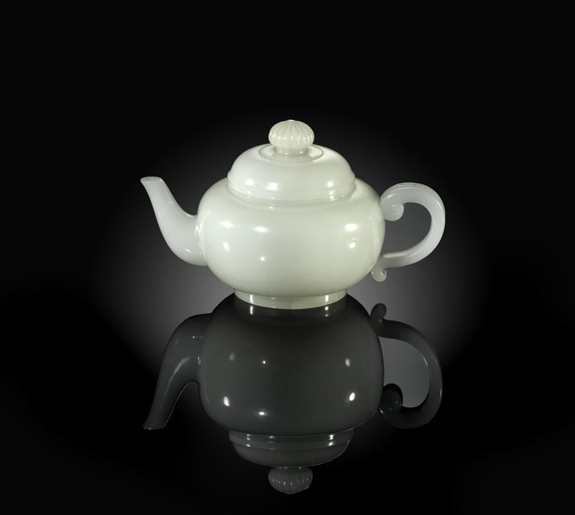Sales of Chinese antiques surged by 180 percent in London this month, as owners profited from a boom in demand for Imperial items by an increasing number of dealers and agents visiting the U.K.
The capital’s main auctions fetched a record 58 million pounds ($93.9 million), almost three times the 20.6 million pounds achieved last May, according to Bloomberg calculations.
Asian antiques are threatening to usurp Old Masters as the third biggest-selling category of the West’s auction market. Impressionist and modern works are in first place, and contemporary works in second.
“The number of new millionaires in Asia is shooting up,” Charles Dupplin, a partner at the London-based insurer Hiscox Plc, said in an interview. “So too is the number of them who want to buy art. I can’t see anything that will hold this back. The client base that buys Old Masters is pretty constant and there is a problem with supply.”
Asian dealers visited regional auction houses in Dorset and Wiltshire after London sales by Sotheby’s (BID), Christie’s International and Bonhams. In December, the three houses’ equivalent auctions of Old Masters, the traditional mainstay of the European art trade, tallied 48.4 million pounds.
Multiple-estimate auction prices for stand-out Imperial pieces -- as well as the sheer volume of other smaller transactions -- have helped turn the trade in Chinese antiques into a worldwide business with an annual value of more than $10 billion.
Oriental Surge
“Last year, Oriental art accounted for more than 50 percent of our turnover,” Guy Schwinge, director of Dorchester- based Duke’s, said in an interview. “Five years ago it would have been less than 10 percent. It can all be put down to the insatiable desire of the Chinese to repatriate works that have left their country over the last 300 years.”
More than a dozen Asian dealers and agents went to Duke’s on May 19 for an 86-lot sale. The event included 11 pieces looted from Beijing in 1860, when Captain James Gunter of the King’s Dragoon Guards was among the British troops who overran the Summer Palace.
Among the “Treasures from the Summer Palace” being sold by Gunter’s descendants was an 18th-century Qianlong-period yellow jade pendant carved in the shape of a dragon.
Similar in style to an Imperial jade scepter that fetched 1.3 million pounds at Bonhams on May 12, the 5-inch-wide pendant sold for 478,000 pounds to a telephone bidder. It had been valued at as much as 50,000 pounds.
Pale Green
“Though this was the best quality 18th-century Imperial art and provenance, the color was a bit too green and pale,” Hai-Sheng Chou, a Taiwan-based dealer, said. “If the color had been more yellow it would have made more than 600,000 pounds.”
A Qianlong-period white jade cup and saucer was also among the objects Gunter took from the Summer Palace. Notable for the purity of its color, this was bought in the room by the London- and New York-based dealers Littleton & Hennessy, bidding for a client, at 513,850 pounds against a high estimate of 200,000 pounds.
The U.K.’s regional auction houses have become a favorite hunting ground for Chinese buyers.
On May 18, the Salisbury auction house Woolley & Wallis offered a Qianlong period Imperial white jade teapot that had been in U.K. private collections since the mid-19th century. Estimated at 200,000 pounds to 300,000 pounds, this sold to a Hong Kong-based telephone bidder for 2.1 million pounds.
A similarly dated white jade vase and cover from a 19th- century Scottish collection sold to a Chinese dealer in the room for 1.2 million pounds, more than 10 times the lower estimate.



